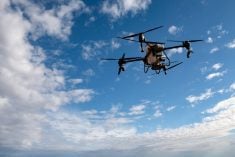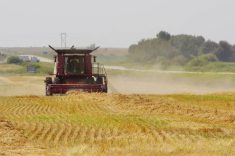One of provincial weed specialist Kim Brown’s tactics to identify a weed that evades identification is to trick it into growing.
“If I absolutely have to identify a weed and I don’t know what it is, I actually dig it up and I grow it out,” said Brown. “The minute you grow it out … a lot of the time it’s a lot easier to know when it’s a bigger plant.”
Grassy weeds are a particular identification challenge. They don’t have as many identifying features, compared to the cotyledons of broadleaf species —quite different from the true leaves —that often offer an easier point of reference.
Read Also

Manitoba boosts stake in cereals centre to $23.5 million
Premier Wab Kinew said the additional project funds will help ‘Trump-proof’ the provincial economy.
If a weed can’t be fully identified in the moment, however, it often can be narrowed down to its weed family, which can lead to positive identification.
Brown, along with her Manitoba Agriculture colleague Dennis Lange, hosted a weed seedling identification seminar at the Ian N. Morrison Research Farm in Carman, Man., on May 21.
Seventy-two different weeds were on display at the seminar.
In terms of prominence across the province and farmer interest though, not all weeds are equal. Weeds such as green and yellow foxtail, redroot pigweed and wild buckwheat are perennial culprits in Manitoba.
“We’ve seen volunteer canola for a number of years now,” said Brown, “It’s a great crop but it’s also a really good weed.”
Brown admits that some weeds seem to respond more to weather patterns, particularly during dry cycles and increased salinity in soils.
“As we get into a wetter cycle, those salts that have come to the surface, they kind of get pushed back down again,” said Brown.
But when it comes to kochia, Brown says that particular weed is “a different beast.”
“In addition to it being a weed that loves salinity, we have an awful lot of herbicide resistance in it now,” she said.















